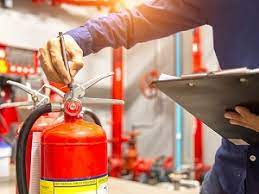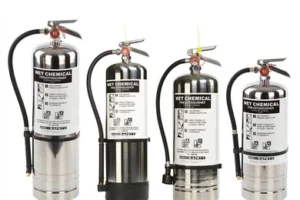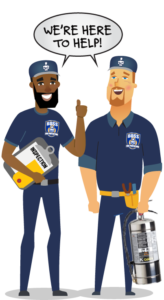Unlock the Power of Proactive Fire Safety
Crucial steps for maintaining fire extinguishers and ensuring your staff is prepared for any emergency.
At Boss Fire Protection, we are committed to not only providing you with top-notch fire safety equipment but also ensuring that you have the knowledge and tools necessary to protect your property and loved ones in case of an emergency. In this month’s newsletter, we want to emphasize the importance of regular in-house inspections of your fire extinguishers and the need for ongoing staff training.


1.Monthly In-House Inspections
Fire extinguishers are an essential part of any fire safety plan, but they are only effective if they are in proper working condition. Monthly in-house inspections are crucial to ensure that your fire extinguishers are ready for action when needed. Here are the five key points you should include in your inspection process:
a. Visual Inspection: Check for any visible damage to the extinguisher, such as dents, corrosion, or leaks. Ensure that the pressure gauge is in the green zone.
b. Accessible Location: Verify that the extinguisher is easily accessible, unobstructed, and properly mounted in its designated location.
c. Tamper Seal: Ensure that the tamper seal is intact. If it’s broken, it might indicate that the extinguisher has been used or tampered with and needs immediate attention.
d. Operating Instructions: Confirm that the operating instructions are legible and facing outward, making them readily available for anyone who needs to use the extinguisher.
e. Service History: Check the service tag or label to verify that the extinguisher has been regularly inspected and maintained by a certified technician.
2.Monthly In-House Trainings
a. Hands-On Training: Provide hands-on training sessions that allow your employees to practice using a fire extinguisher in a controlled environment.
b. Familiarization with Types: Ensure your staff understands the different types of fire extinguishers and their appropriate uses. Not all fires are the same, and using the wrong type of extinguisher can be dangerous.
c. Evacuation Procedures: In addition to extinguisher training, teach your staff the importance of evacuation procedures and how to call for help in case of a fire.
d. Regular Refresher Courses: Fire safety knowledge can fade over time. Schedule periodic refresher courses to keep your staff’s skills up-to-date.
e. Emergency Contact Information: Make sure your employees know how to contact emergency services and understand the location of fire exits and assembly points.
Remember, fire safety is a shared responsibility, and the effectiveness of your fire protection equipment depends on both regular maintenance and knowledgeable staff.
If you have any questions about fire extinguisher inspections or staff training, please feel free to reach out to us. We’re here to help you stay safe.





